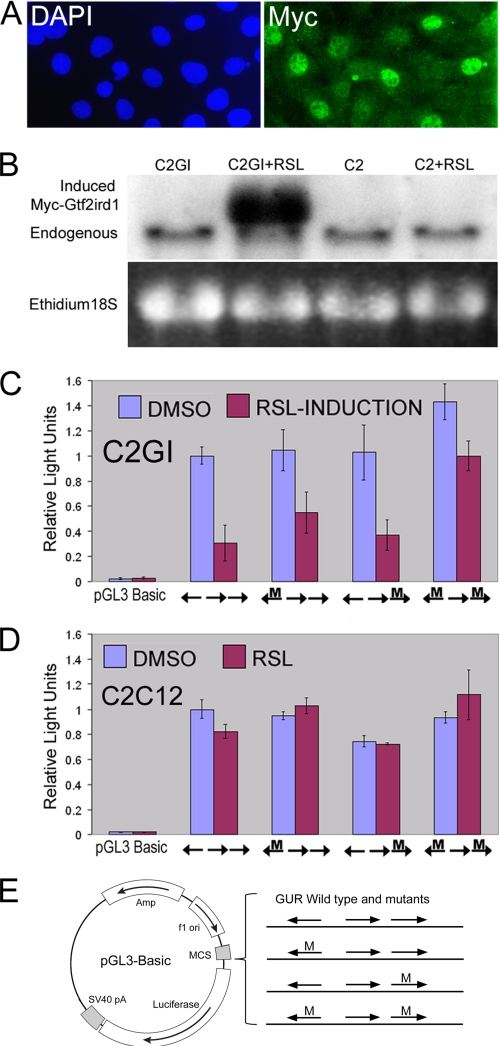FIGURE 6.
The GUR acts as an effective enhancer/promoter in cell culture assays and is negatively regulated by exogenously derived inducible GTF2IRD1. A, inducible Myc-GTF2IRD1 clonal cell line C2GI, with nuclei stained by DAPI and Myc-tagged GTF2IRD1 detected by anti-Myc immunofluorescence (Myc). B, Northern blot of C2GI and parental C2C12 (C2) cell RNA with or without the inducer RSL. C, C2GI inducible GTF2IRD1 cells with pGL3-Basic and pGL3-GUR constructs containing the wild-type GUR or with mutations (M) in the flanking recognition sites. Induction of GTF2IRD1 leads to a repression of the reporter containing the wild-type GUR. Mutations in the GTF2IRD1 binding sites result in attenuation of repression. Luciferase activity was set at 1 for the wild-type GUR, and measurements were normalized relative to this to combine experiments. Error bars indicate the S.D. of duplicate measurements in two separate experiments. D, C2C12 parental cell line control experiment showing that repression is not caused by the induction ligand RSL. A single experiment conducted in duplicate. Error bars indicate range. E, diagram of reporter constructs used in C and D. The wild-type GUR and permutations containing 3-bp mutations (M) in the GGATTA site were introduced into pGL3-Basic in the appropriate orientation.

